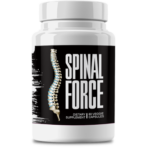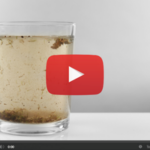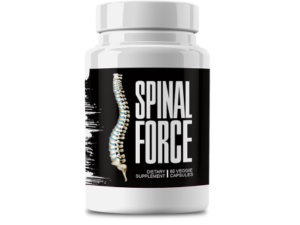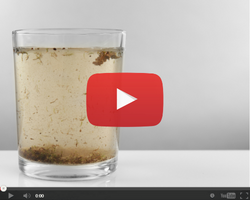This Village-Made Chinese Pain Reliever Eliminates Back And Joint Pain!
Discover the Best Remedies for Tennis Elbow to Enhance Recovery

Getting to Know Tennis Elbow
What Exactly is Tennis Elbow?
Tennis elbow, or lateral epicondylitis if you're feeling fancy, is that nagging pain you feel on the outer part of your elbow. It's typically linked to repetitive motions involving your forearm and wrist, which can inflame the tendons. Despite the name, you don’t need to be a tennis player to experience it; anyone who's into repetitive arm movements could find themselves dealing with this bothersome issue.
Why Does Tennis Elbow Happen, and What Does It Feel Like?
At the heart of tennis elbow lies stress and overuse of your forearm muscles and tendons. You might notice pain and tenderness on the outside of your elbow, which can radiate down to your forearm and wrist. This discomfort usually ramps up with activities that involve gripping or lifting — something as simple as picking up a cup could become a real pain.
How It Affects Everyday Life
The pain from tennis elbow can really throw a wrench into your daily routine. Turning a doorknob, shaking hands, or even holding your morning coffee can become tricky. It doesn’t just mess with your physical abilities; it can also lead to a fair bit of frustration and stress.
Traditional Ways to Tackle Tennis Elbow
Rest and Changing Activities
The first step in dealing with tennis elbow is giving your arm the breather it needs. Taking a break or tweaking activities that worsen the pain can relieve tendon strain, allowing time for healing. This downtime is key to preventing further damage.
Using Ice and Heat
Ice packs can help bring down swelling and numb the pain, offering temporary relief. Meanwhile, heat therapy can relax and loosen tissues, boosting blood flow to the elbow. Switching between these treatments might just do the trick.
Over-the-Counter Painkillers
Nonsteroidal anti-inflammatory drugs (NSAIDs) like ibuprofen or naproxen can be effective in reducing pain and inflammation. Just remember to follow the directions and chat with a healthcare pro if you’ve got any doubts.
Physical Therapy and Exercises
Stretching it Out
Stretching exercises are crucial for recovery, helping to keep things flexible and ward off stiffness. Simple stretches, like extending your arm and gently pulling back on your fingers, can bring significant relief over time.
Building Strength
Once the sharp pain starts to ease, strengthening exercises can help reinforce the muscles around your elbow. Building up this strength can offer better joint support and reduce the odds of the pain coming back.
Why Proper Form Matters
Whether you’re lifting weights or typing away at your desk, using the correct form is key. Proper technique can prevent excess stress on your elbow, cutting down the risk of injury.
Alternative and Holistic Approaches
Acupuncture for Relief
Acupuncture, an age-old Chinese therapy, might be just what you need for tennis elbow relief. By inserting thin needles into specific spots on the body, acupuncture aims to restore balance and ease pain—a holistic take on treatment.
The Perks of Massage Therapy
Massage therapy can be a game-changer in easing tension and boosting circulation around the sore spot. Regular sessions might help lower discomfort and promote overall muscle relaxation.
Using Herbal Supplements
Some folks find relief with herbal supplements like turmeric or arnica, known for their anti-inflammatory effects. However, it’s wise to run this by a healthcare provider before diving into a new supplement routine.
Cutting-Edge Treatments and Tech
Ultrasound Therapy
Ultrasound therapy uses sound waves to help heal tissues and ease pain. This non-invasive treatment can be part of a comprehensive rehab plan, helping speed up recovery.
Shockwave Therapy
Shockwave therapy involves sending strong sound waves to the affected area, triggering healing processes. It’s particularly effective for chronic cases that resist other treatments.
Laser Therapy
Laser therapy is another modern method that uses light energy to boost tissue repair and relieve pain. It’s gaining fans for its precision and effectiveness.
Diet and Lifestyle Tweaks
Anti-inflammatory Eating
Eating an anti-inflammatory diet filled with fruits, veggies, lean proteins, and healthy fats can support healing. Foods like berries, turmeric, and fatty fish are especially helpful.
Why Hydration Matters
Staying well-hydrated is crucial for overall health and aids in muscle recovery. Water helps maintain tendon and muscle elasticity and flexibility, which is essential during healing.
Handling Stress
Managing stress is a key, yet often overlooked, part of recovery. Practices like meditation, yoga, or deep breathing exercises can foster relaxation, which may indirectly help reduce muscle tension and pain.
Preventing and Managing Long-term
Using the Right Gear
Using equipment that suits your body and activities can ward off unnecessary strain. Ergonomic tools and adjustments can make a big difference, especially for those involved in repetitive tasks.
Regular Workouts and Strength Building
Consistent exercise and strength training not only aid recovery but also help prevent future injuries. A balanced routine focused on overall body strength can offer long-term benefits.
Keeping an Eye on Symptoms
Keeping track of symptoms and addressing them quickly can prevent them from worsening. If pain persists, it’s crucial to tweak activities and seek professional advice if needed.
Seeking Professional Help for Tennis Elbow
When to See a Doctor
If home remedies don’t ease symptoms or if pain gets worse, it’s time to consult a doctor. They can provide a thorough evaluation and suggest more treatments if necessary.
The Role of Physical Therapists
Physical therapists are key players in recovery, offering tailored exercises and therapies. Their expertise can guide you through a safe and effective rehab process.
Finding the Right Specialist
Choosing the right specialist, whether it’s an orthopedic surgeon or a sports medicine physician, can make a big difference in your treatment plan. Look for professionals with experience handling tennis elbow for the best results.








